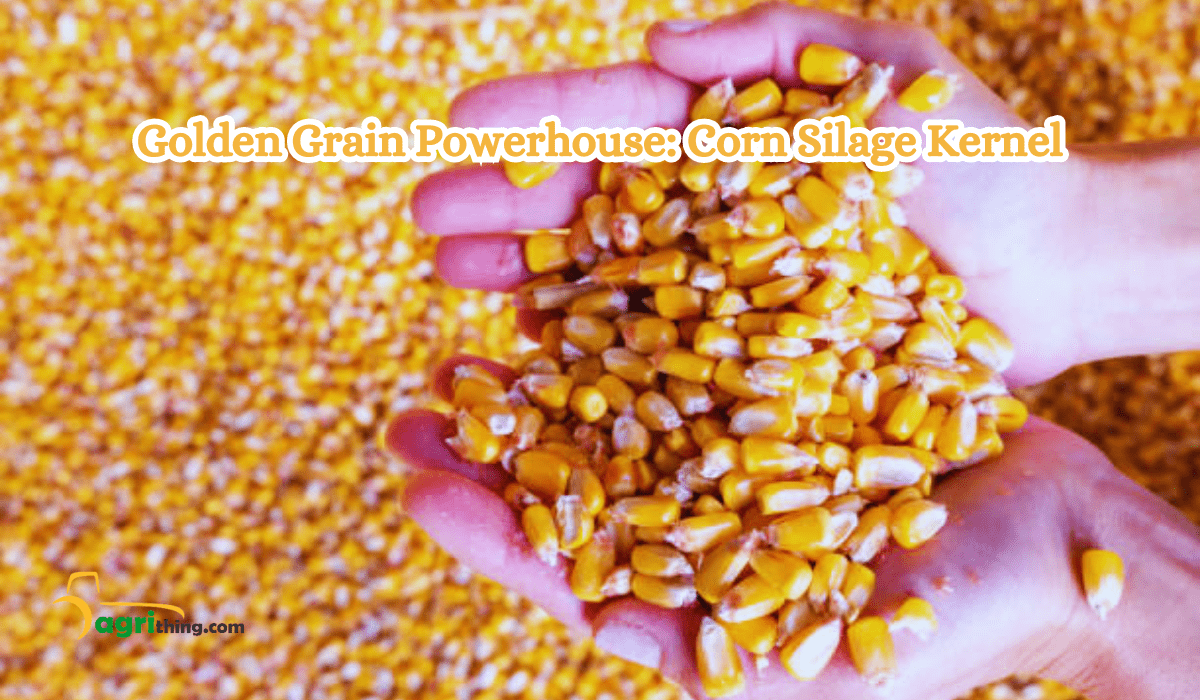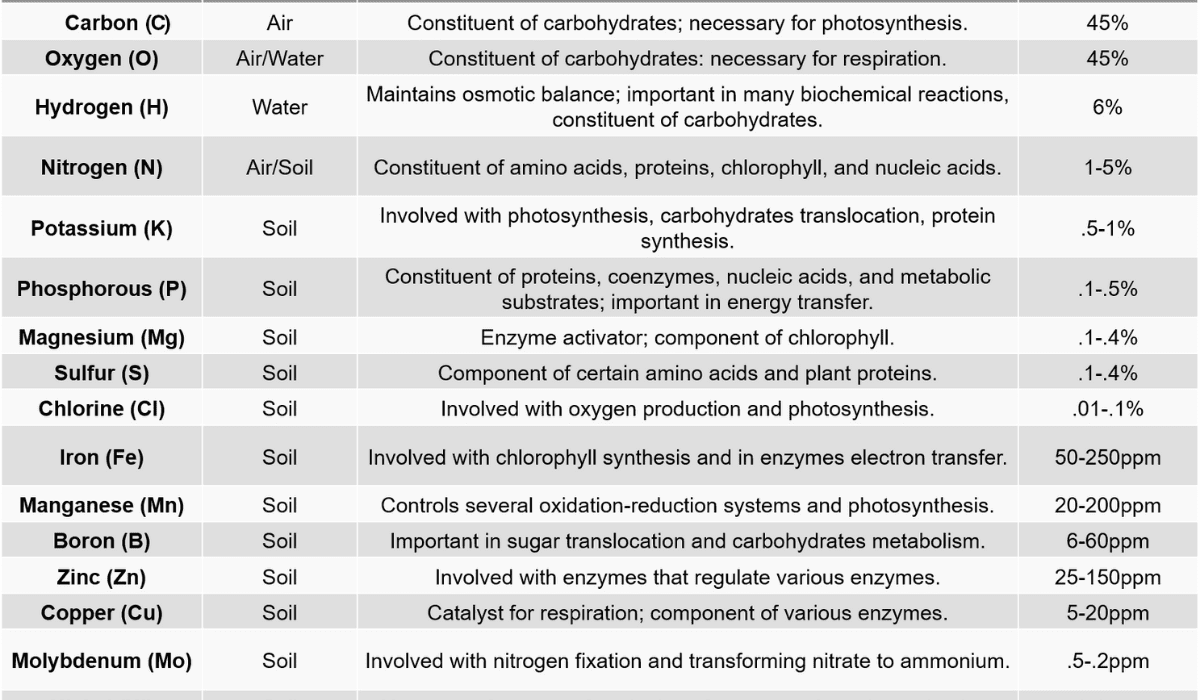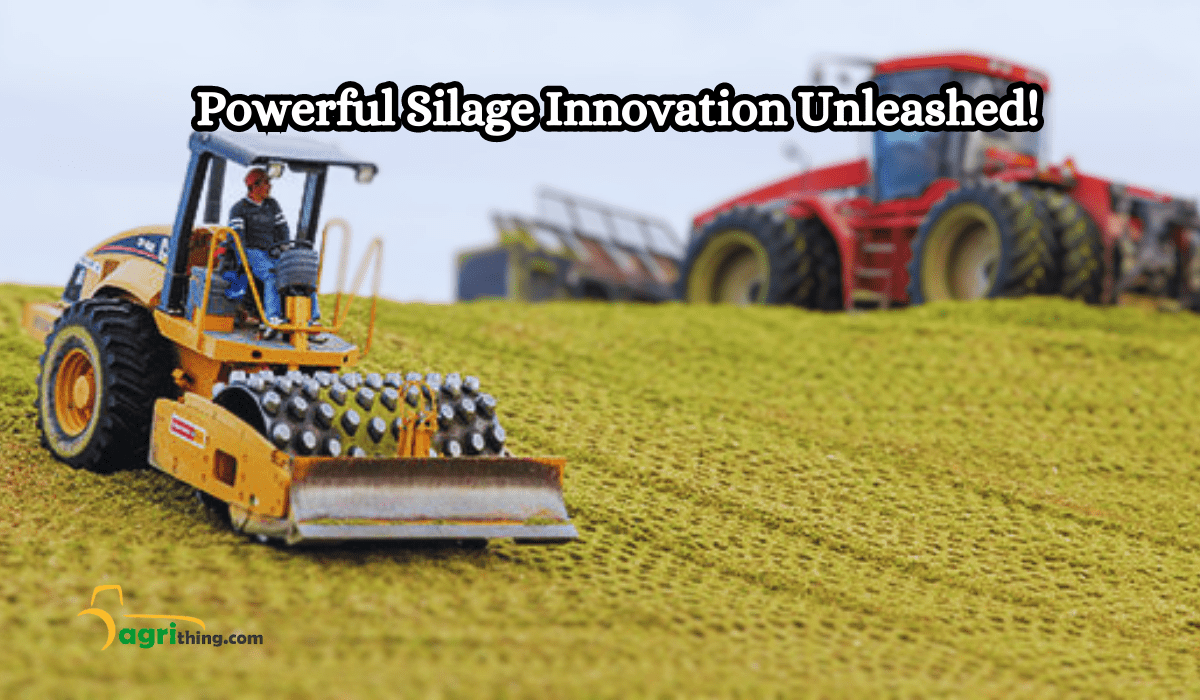Master Silage Fermentation: Empower Your Farming Success
Silage Fermentation is important for feeding livestock. But ensuring the nutrients in the silage are available is challenging for farmers and nutritionists. To improve nutrient availability, we need to take a comprehensive approach. This means managing the soil, providing proper plant nutrition, preserving the silage, and using advanced technologies. This article will look at ways to make nutrients more accessible and get the most out of corn silage for feeding livestock.
Table of Contents
Introduction
Silage Fermentation is a popular crop for feeding livestock because it produces a lot and has good nutrition. But the nutrients in Maize fodder can change depending on the soil, the type of corn, how it’s harvested, and how it’s stored. To ensure the animals get the best nutrition, we must deal with these challenges and use strategies that make the nutrients available.
Understanding Nutrient Availability
The amount of nutrients in the soil that plants can use is called nutrient availability. This is important for Silage Fermentation because it affects the plants’ nutrition. Several things can affect nutrient availability, like the pH of the soil, how much organic matter is in it, the balance of nutrients, and the presence of helpful microorganisms. The type of corn and how it’s grown also play a big part in how many nutrients the Maize fodder has and how easily it can be digested.
Improving Nutrient Availability through Soil Management
A healthy soil ecosystem is very important for providing enough nutrients for Silage Fermentation. Soil testing and analysis are helpful tools for finding out if there are any nutrient problems or imbalances. Once the results are known, the right soil amendments and fertilizers can be used to make sure the plants have the best nutrient balance for growing well. Taking care of the organic matter, planting cover crops, and rotating crops can also make the soil healthier and improve the availability of nutrients.
Optimizing Nutrient Uptake through Proper Plant Nutrition
To ensure Maize fodder has enough nutrients, giving the plants the right amount of nutrients they need is important. This includes macronutrients like nitrogen, phosphorus, potassium, and important micronutrients. Balancing these nutrients properly is crucial to help the plants grow well and take in as many nutrients as possible. The pH level of the soil is also very important for nutrient availability. Adjusting the pH to the right range can greatly affect how well the corn plants absorb the nutrients.
Enhancing Digestibility and Fermentation of Silage
How you harvest, and store Silage Fermentation can affect its nutrients and quality. Harvest when the moisture is right and chop it to the proper length to get it right. Additives like inoculants, organic acids, and enzymes can improve fermentation, help the nutrients get digested, and keep the silage in good condition.
Preserving Nutrient Availability during Storage and Feeding
Storing Corn forage properly is important for keeping its nutrients intact. It’s crucial to keep oxygen out, control moisture levels, and pack it tightly to achieve this. These factors affect the fermentation process and help prevent nutrient loss. By using good storage methods like covering silage piles and keeping storage structures airtight, you can preserve the nutritional value of the silage. Feeding it correctly is important, minimizing spoilage during feeding to ensure livestock gets the most out of the nutrients.
Incorporating Advanced Technologies
Technology advancements improve Silage Fermentation by making nutrients more available. Precision agriculture tools give accurate information on soil conditions, nutrient needs, and crop health. This helps us manage nutrients better. Better corn hybrids also make nutrients easier to get and digest. Scientists are always working on new ways, like adding helpful bacteria and special substances, to make silage better and use more nutrients.
Optimizing Silage Fermentation: Effective Crop Management
Soil preparation:
First, test the soil for nutrients and pH levels. Then, use the right fertilizers and soil amendments based on the results to ensure the corn gets enough nutrients to grow well. It’s also important to have good soil drainage so the soil doesn’t get too wet and stop the crops from growing properly.
Seed selection:
Pick good corn seeds that are a good fit for your local weather and soil. Look for seeds that can produce a lot of corn, resist diseases, and grow quickly. It can also be helpful to plant corn seeds that have been genetically modified (GM) to tolerate herbicides or resist insects.
Planting and spacing:
Plant the corn seeds at the depth and spacing recommended for your chosen specific variety. Give enough space between each plant so that they get enough sunlight, air, and nutrients. Try to make sure the plants are evenly spread out to get the most corn in the end.
Weed control:
Create a plan to control weeds and reduce their impact on the corn plants. Weeds compete with corn for nutrients, water, and sunlight. You can use herbicides before and after the corn plants sprout or tools to physically remove the weeds. It’s also helpful to use a combination of different methods for weed management. Keep an eye out for weeds and take action promptly to keep them under control.
Irrigation:
Monitor soil moisture levels regularly and provide irrigation when necessary, especially during critical growth stages such as tasseling and silking. Avoid overwatering, leading to nutrient leaching and negatively impacting root development.
Nutrient management:
Create a well-rounded fertilization plan using information from soil tests, the nutrient needs of your crops, and recommended amounts to apply. Think about using natural sources of nutrients like compost or manure to improve the health of the soil. Dividing the application of nitrogen fertilizer can maximize nutrient absorption and reduce environmental harm.
Disease and pest management:
Keep a close eye on your corn plants for any signs of diseases, pests, or insect damage. If needed, use integrated pest management (IPM) techniques, which include cultural, biological, and chemical control methods. Remember to rotate your crops and maintain good field hygiene to reduce the risk of spreading diseases.
Harvest timing:
Choose the right time to harvest Corn forage based on the desired moisture content and the crop’s maturity. Harvesting too soon can lead to lower yield and nutrient content, while delaying the harvest may decrease the forage quality. You can use moisture testers or observe plant indicators to determine the best time.
Storage and fermentation:
When assembling harvested Silage Fermentation, it’s important to do it correctly to prevent air from getting in and encourage anaerobic fermentation. Aim for a pH level of about 3.8-4.2, as it helps prevent spoilage and preserve the nutrient quality. Compact the silage adequately and cover it with an oxygen barrier film to promote successful fermentation and preservation.
Feed analysis:
Frequently analyze the Silage Fermentation to evaluate its nutritional composition, which includes protein, fiber, and energy levels. This data will assist you in creating well-balanced diets for your livestock, promoting their overall health and performance.
Monitoring and Evaluation
We need to monitor the nutrients and quality of silage to see if our strategies are working. By studying the nutrients, fermentation, and digestibility, we can learn how well our efforts to improve nutrients are doing. With the results, we can change our methods and ensure we have enough nutrients in Silage Fermentation.
Conclusion
Farmers should pay attention to soil management, plant nutrition, silage preservation, and advanced technologies to improve the nutrients in Silage Fermentation. Farmers can make Silage Fermentation more nutritious for animals by focusing on these things. To achieve this, they can use strategies like testing the soil, using the right amount of fertilizer, choosing the best seeds, controlling weeds, providing enough water, storing the silage properly, monitoring fermentation, and analyzing the feed. By keeping an eye on these strategies and making changes when needed, farmers can produce the best possible Corn forage, providing high-quality nutrition for animals.
Frequently Asked Questions (FAQ’s)
How is nutrient availability in Silage Fermentation enhanced?
To improve the availability of nutrients in Silage Fermentation, it is important to use proper ensiling techniques and harvest it at the right time.
Why is nutrient availability important in Silage Fermentation?
Nutrient availability is crucial in Corn forage as it directly impacts the nutritional value and quality of the feed for livestock.
What factors affect nutrient availability in corn silage?
Many things affect the nutrients in Corn forage. These things include when it’s harvested, how it’s stored, and the activity of tiny organisms.
Are there specific additives or treatments to enhance nutrient availability in corn silage?
Certain additives, such as microbial inoculants, enzymes, and organic acids, can improve the availability of nutrients in Corn forage production.
How does nutrient availability in corn silage impact livestock health?
The nutrients in Corn forage affect the health of livestock. They give the animals what they need to grow, develop, and stay healthy.
Related Articles
Want to purchase top-quality silage? Visit our Agricomplex website to explore our wide range of silage products.
People Also Asked
How long does it take for corn silage to ferment?
Corn forage usually ferments for about three weeks, but the time can differ based on how wet the corn is, how long it’s chopped, and what additives are used.
Can I use manure as a fertilizer for corn silage production?
Manure is a great way to provide nutrients for growing corn silage. However, it’s important to use it correctly by following the right methods for applying it, choosing the right amount, and ensuring the nutrients are properly balanced.
Are there any risks associated with using additives in silage?
Using additives correctly can improve Silage fermentation, make nutrients more available, and prevent spoilage in silage. However, following the recommended amounts and application instructions is important to reduce any possible risks.
Is it necessary to test the soil before planting corn?
Before planting corn, it is strongly recommended to conduct a soil test. This test provides important information about the soil’s levels of nutrients and pH, which helps farmers make informed choices about how much fertilizer to apply and if any soil amendments are needed.
What is the recommended moisture content for harvesting corn silage?
Harvesting Corn forage is generally advised to aim for a moisture content of 60% to 70%. This range guarantees the right silage fermentation process and preserves the nutrients in the silage.




